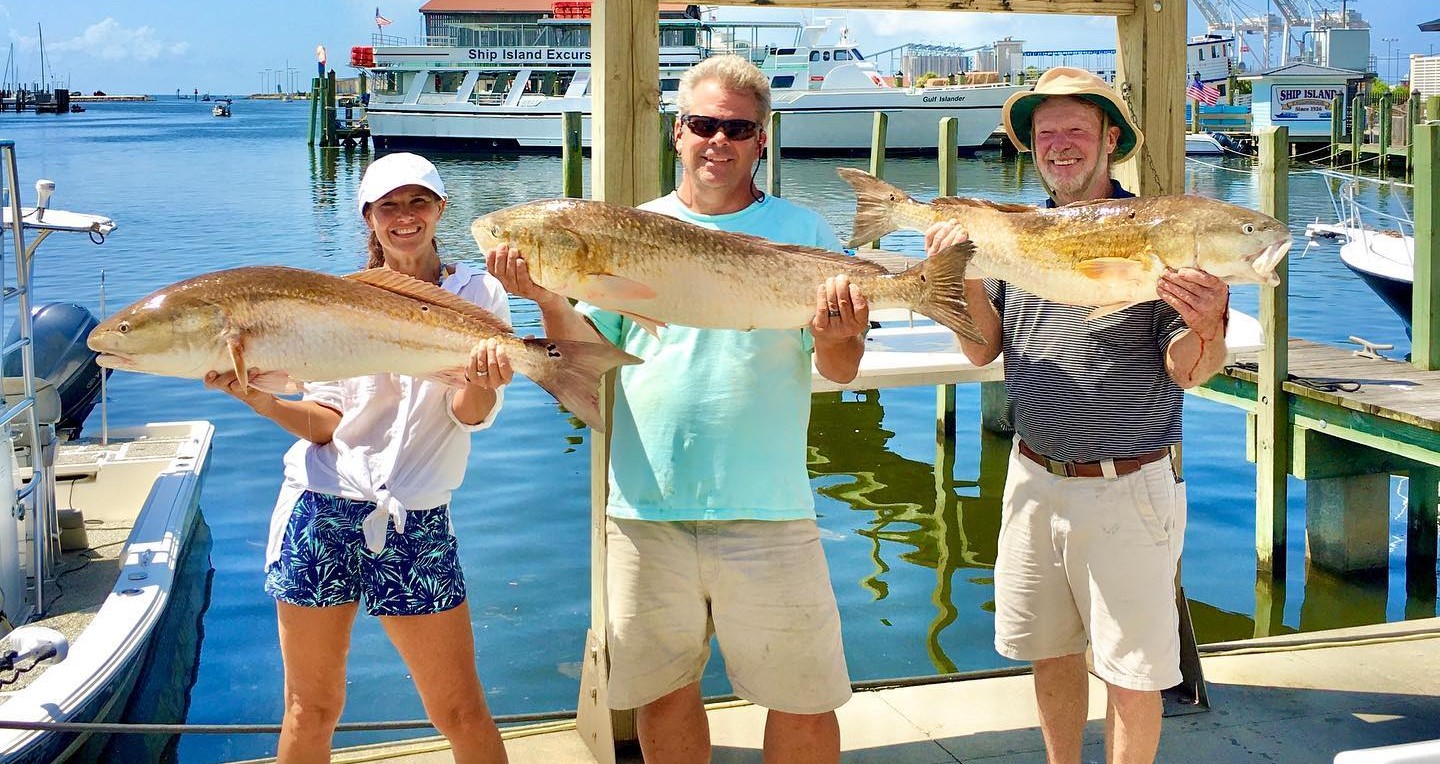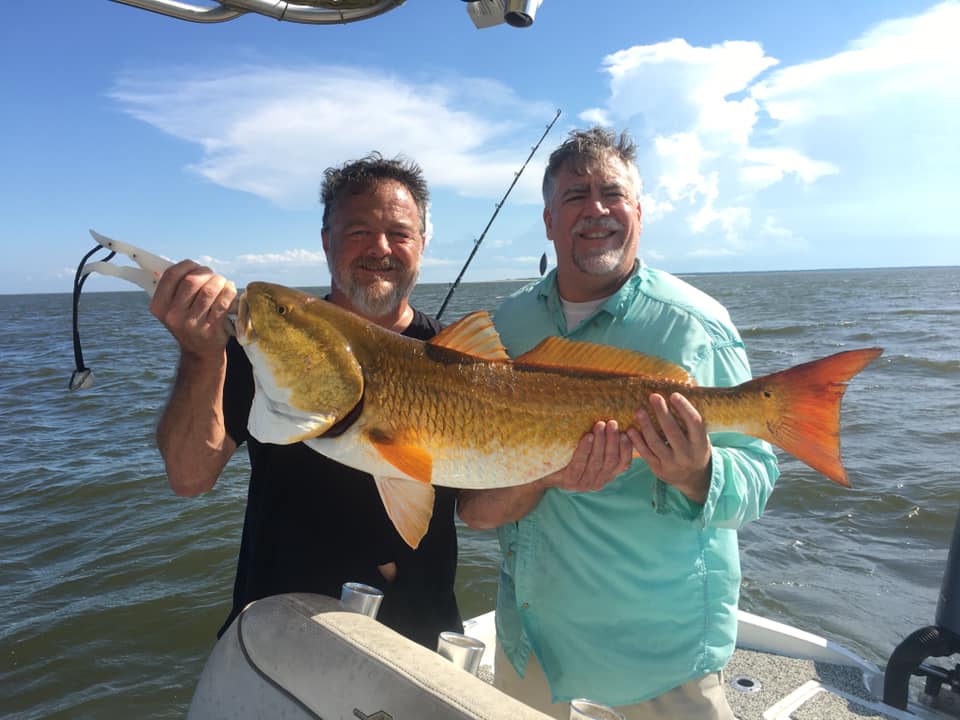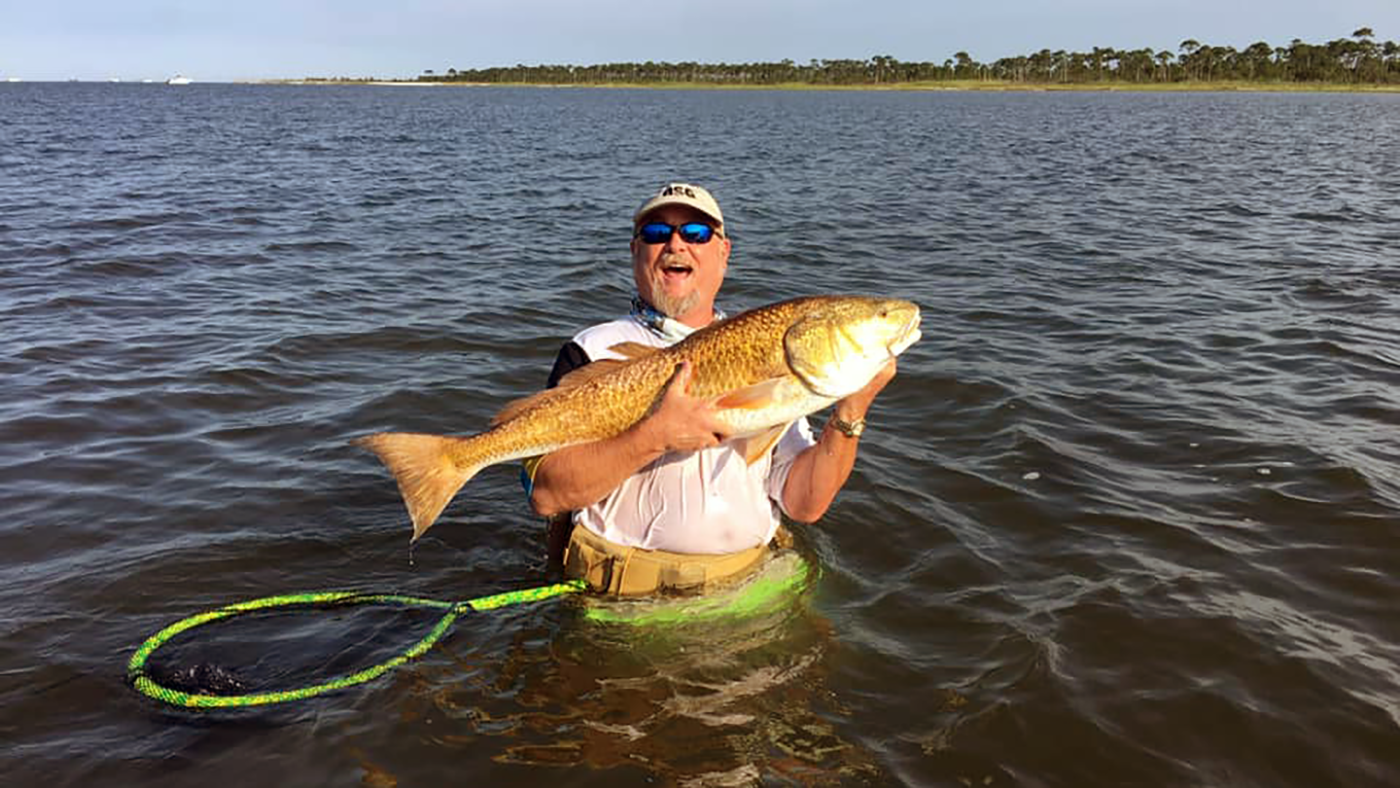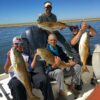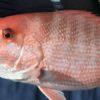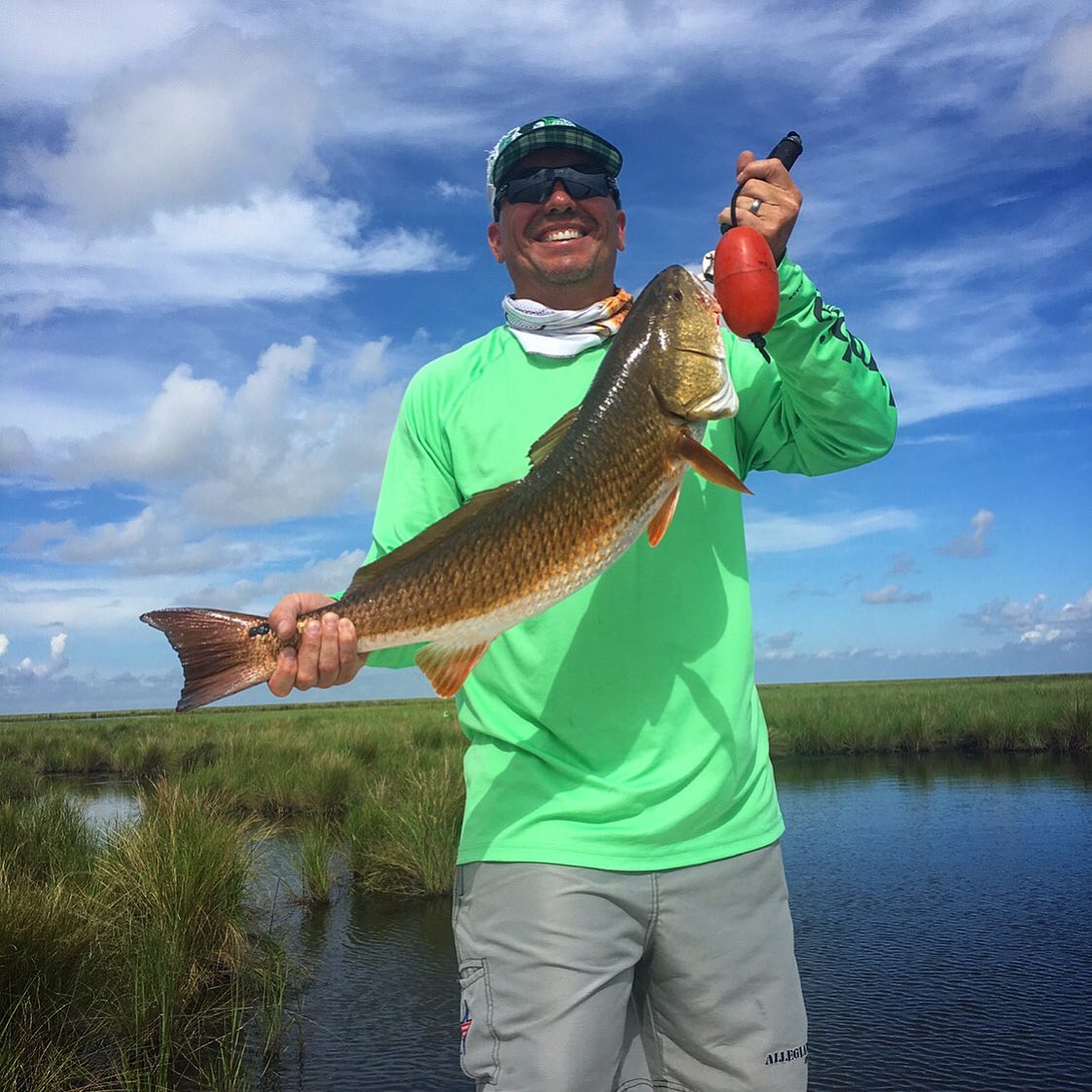
Last Updated on April 2, 2025 by Eric Bonneman
A Short Guide to Targeting Redfish in Shallow Marsh Systems This Season
Each spring, redfish become the primary focus for fishermen working the marshes across Louisiana’s inshore waters. As temperatures rise and water levels stabilize, redfish shift into predictable feeding patterns that make them more accessible and more aggressive. The marsh offers a uniquely shallow and dynamic environment, where grass lines, mud flats, and interior ponds become fully active and full of opportunity. This guide covers the seasonal patterns, habitat structure, gear, bait, and techniques that define spring marsh fishing with Legends of the Lower Marsh.
Understanding Redfish in the Marsh
Redfish, also known as red drum (Sciaenops ocellatus), are stout, strong inshore fish that thrive in the shallow, brackish waters of Louisiana’s marshes. Their copper to bronze coloring, single dark tail spot, and thick body make them easily recognizable. They are well adapted to moving through tight marsh terrain and feeding in shallow water.
Spring redfish are active, deliberate feeders that spend much of their time rooting through grass beds and mud for shrimp, crabs, and baitfish. Their broad tails and muscular build allow them to surge quickly, especially when cornered or feeding in confined areas. During this season, redfish are often seen cruising shorelines or tailing in very shallow water, offering fishermen visual cues and targeted opportunities.
How Spring Changes the Marsh
Spring brings balance back to the marsh. After colder, wind-driven winter conditions, March through May offers more stable temperatures, better water clarity, and stronger tidal cycles. As the water warms into the low to mid 60s and baitfish return, redfish feeding behavior ramps up sharply.
This season is marked by transitions—redfish move from wintering areas back into interior marsh ponds and edges, taking advantage of increasing forage. The shift is gradual but consistent, with fish becoming more visible, more aggressive, and easier to pattern across a range of water depths and structure types. While they remain present throughout the marsh all year, spring is when they begin to move confidently and hold in the shallows for longer periods.
Where Redfish Hold in Spring
Finding redfish in spring requires paying attention to water movement, clarity, and structure. The marsh is full of potential spots, but productive areas tend to share a few key features.
Interior Ponds
These shallow pockets become active feeding grounds in spring. Redfish push deep into ponds where bait collects, especially on a rising or falling tide. Look for subtle movement at the surface—wakes, tails, or sudden pushes near the grass edge.
Marsh Drains and Cuts
Where smaller channels empty into larger bayous or ponds, water movement creates natural funnels for bait. These are high-traffic areas for redfish and are often productive on a falling tide when bait is pushed out.
Shoreline Points and Edges
Curved or tapered edges along a pond or bayou give redfish ambush angles and cover. These are reliable targets when water clarity is high and fish are cruising or holding near the grass.
Shell Beds and Hard Bottom
Areas with scattered oyster or shell create both structure and forage. Redfish often patrol these zones slowly, looking for crabs or baitfish tucked along the edge of harder bottom transitions.
Spring redfish can shift quickly between zones depending on tide, wind, and water clarity. Movement tends to follow the bait, and fishermen who adjust with the conditions often see more consistent results.
Tackle and Gear for Spring Marsh Fishing
Redfish are powerful in tight water, but they don’t require heavy offshore gear. The focus in marsh fishing is on accuracy, strength, and quick response.
Rods and Reels
-
Rods: Medium to medium-heavy spinning rods between 6’6″ and 7’6″ offer the right balance of casting distance and control.
-
Reels: 3000 to 4000 class spinning reels provide enough capacity and drag for marsh conditions without being oversized.
Line and Leader
-
Main Line: 15–30 lb braided line is standard for marsh fishing, giving both sensitivity and strength for pulling fish out of grass or off oyster beds.
-
Leader: 20–30 lb fluorocarbon leader offers abrasion resistance and low visibility. Leader length can be adjusted based on water clarity.
Reel drag settings should be firm enough to stop a fish quickly but smooth enough to avoid pulling hooks during close-range fights.
Bait Selection for Spring Redfish
Spring redfish respond well to a variety of baits, both natural and artificial. Presentation and movement are more important than size, especially in shallow, clear water.
Live and Natural Baits
-
Live Shrimp: Fished under a popping cork or free-lined, shrimp remain a go-to bait throughout the season.
-
Cut Mullet or Crab: Effective when fished on the bottom, especially near shell or mud banks.
-
Minnows or Finger Mullet: Active baitfish can draw aggressive strikes when worked near structure or visible fish.
Artificial Lures
-
Soft Plastics: Paddle tails or jerkbaits rigged on light jigheads or weedless hooks allow for quiet, precise presentations. Natural colors in clear water and darker tones in stained water are both effective.
-
Gold Spoons: Simple, effective, and highly visible in grass or stained conditions. Best used in open lanes between vegetation.
-
Topwater Plugs: Early mornings or calm, overcast days often produce surface strikes when redfish are actively patrolling shallow zones.
Bait selection should reflect the conditions—clarity, depth, and bait presence will guide what works best from day to day.
Productive Tactics for Spring Redfish
Sight Fishing
Spring offers some of the best sight fishing of the year. Clear water and active fish make it possible to spot tailing or cruising redfish in ponds and along banks. Quiet movement, controlled casting, and reading the fish’s direction are critical.
Popping Cork Fishing
Popping corks with shrimp or soft plastics allow for suspended bait presentation over grass, shell, or mud. This setup produces strikes when fish are feeding mid-water and offers visual feedback for subtle takes.
Slow Rolling and Bottom Dragging
In deeper drains or along shell beds, working a soft plastic slowly along the bottom mimics small bait and crustaceans. This technique is useful when fish are holding deeper or less visibly.
Fan Casting Structure
When fish are not visible, covering water methodically by casting along grass lines, drains, or into likely holding areas increases the chance of connecting with a moving fish.
Handling and Conservation
Marsh redfish are strong but vulnerable in shallow water. Proper handling ensures both legal harvest and safe release.
-
Wet hands before handling to protect the fish’s slime coat.
-
Support the body horizontally, especially for larger fish.
-
Use barbless hooks or circle hooks where appropriate to limit deep hooking.
-
If keeping fish, ice them immediately to preserve quality.
-
Know and follow Louisiana’s size and bag limits for redfish and other marsh species.
Fishing the Marsh Right This Spring
Each spring, the marsh comes alive with movement, feeding patterns, and the return of visible redfish in shallow water. This is the season where preparation meets opportunity—when tide, clarity, and bait combine to make the marsh not just fishable, but active and consistent.
At Legends of the Lower Marsh, we run focused spring trips built around these conditions. With experienced guides who know how fish shift with the season, we’re ready to put you on the water when the marsh is at its most productive. Contact us to plan your spring trip and take advantage of one of the most dependable and rewarding seasons for redfish all year.

